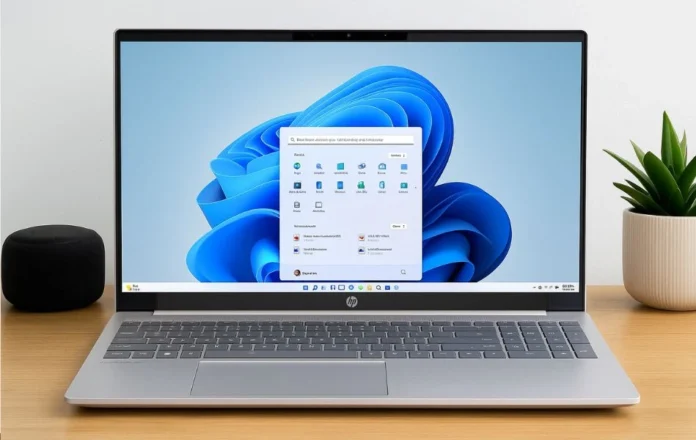If you’re a student looking to buy a new laptop, you’ve probably noticed that “AI laptops” are everywhere these days. But what does that really mean? And more importantly – are they worth it?
AI laptops aren’t just a tech trend. They’re designed to make your everyday work easier, with built-in smart features like voice typing, automatic note summaries, real-time captioning during lectures, or even generating images from simple text prompts. These features don’t just live in the cloud – they run directly on your laptop thanks to a special chip called an NPU (neural processing unit), which is built for AI tasks.
For students, this means better multitasking, faster performance, and great tools to help with everything from research to remote learning – all without a constant internet connection.
When we say “affordable” AI laptops, we’re looking at prices between $700 and $1,500 – a great option where you get powerful features without breaking your budget. These are the laptops that can last you for years through classes, assignments, creative projects, and maybe even a little gaming in between.
In this guide, we’ll explain what makes a laptop truly “AI-ready,” what features students should look for, and compare the best models available right now. Whether you’re interested in coding, content creation, design, or just looking for a great all-rounder – there’s something here for you.
Table of Contents
Quick Overview: Affordable AI Laptops in 2025
| Image | Product | Feature | Price |
|---|---|---|---|
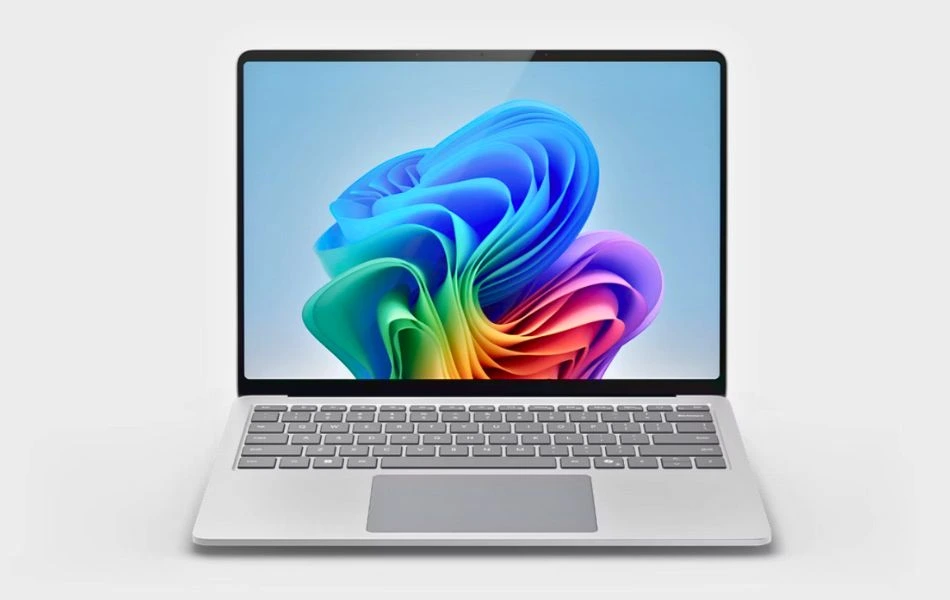 | Microsoft Surface Laptop 7 |
| Check Price |
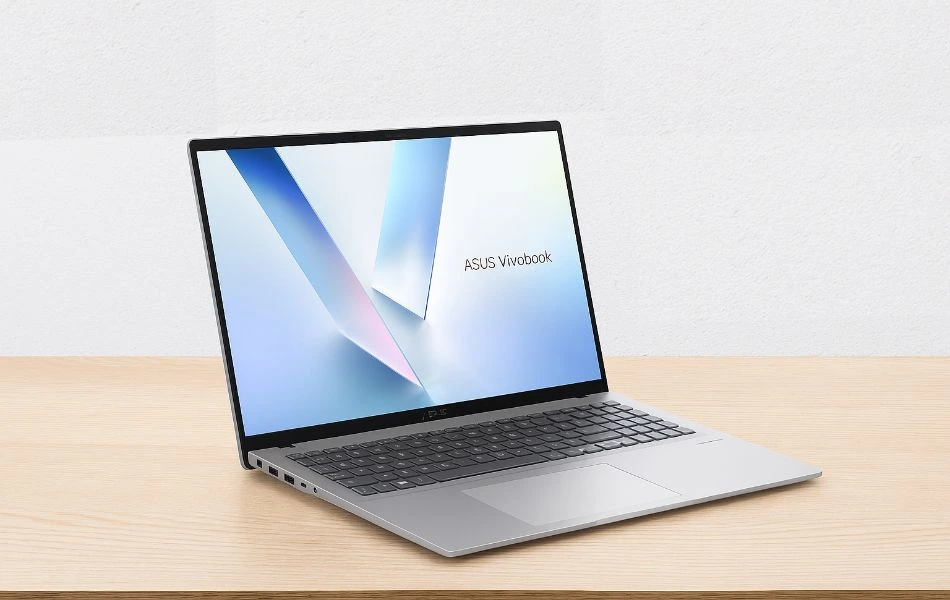 | ASUS Vivobook 16 |
| Check Price |
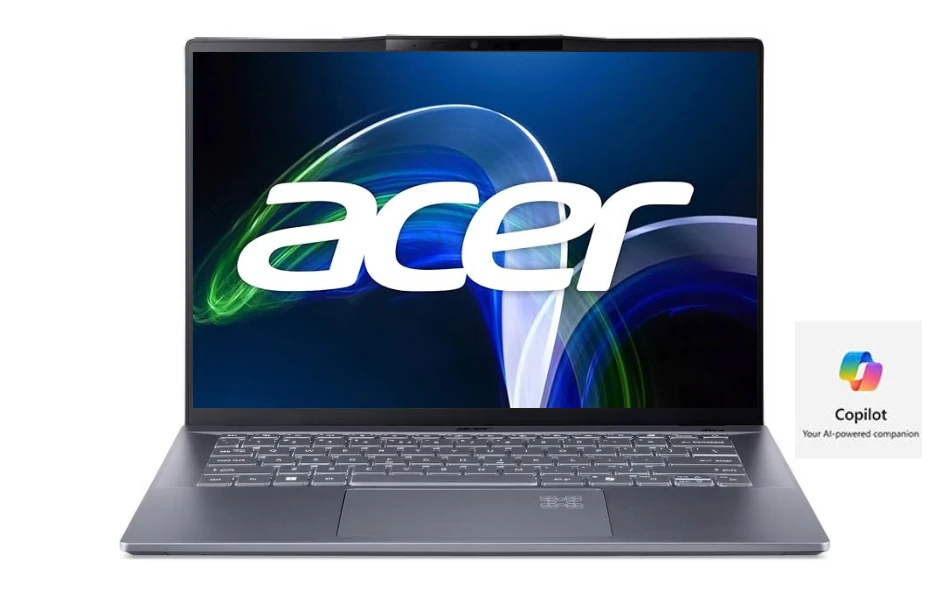 | Acer Swift 14 AI |
| Check Price |
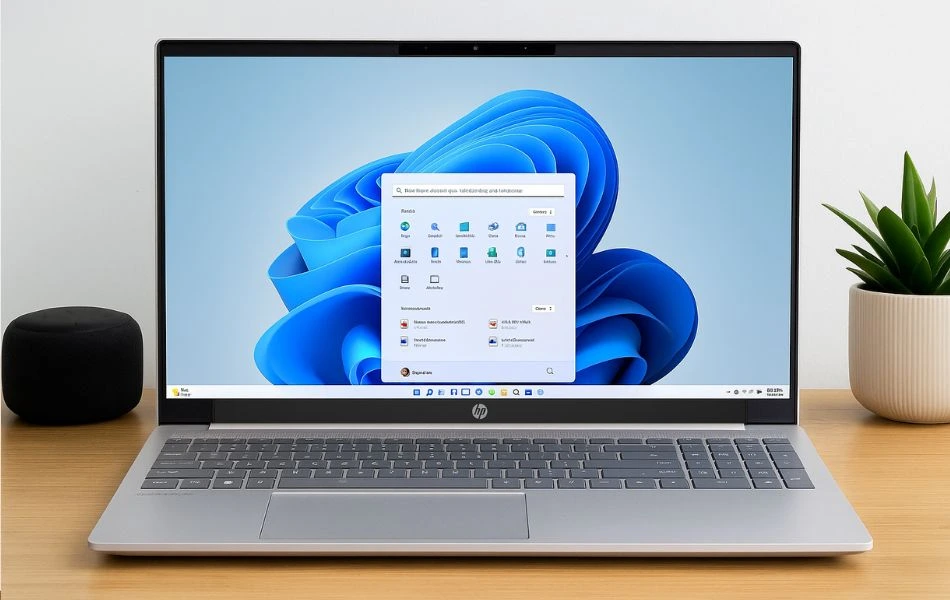 | HP Omnibook 5 |
| Check Price |
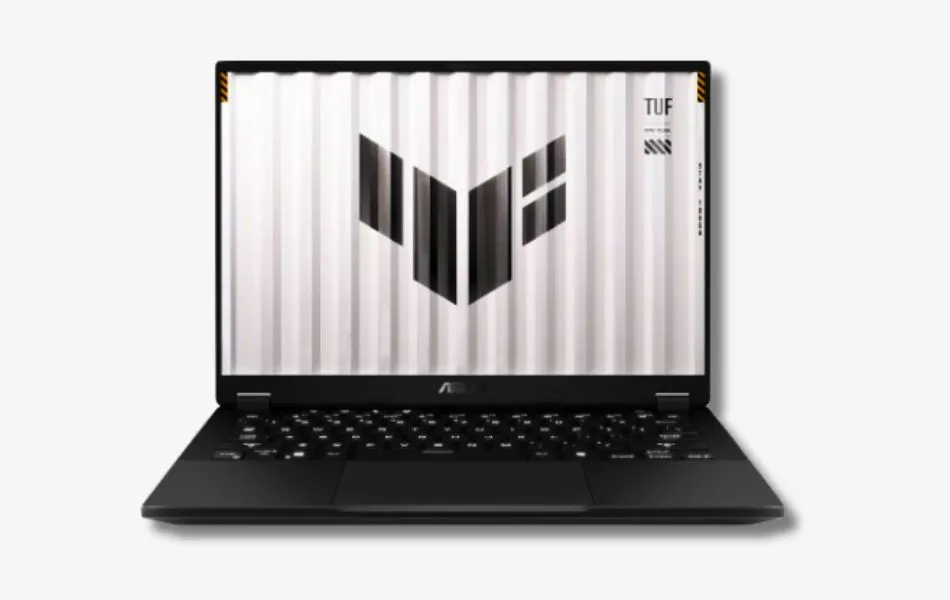 | ASUS TUF Gaming A14 |
| Check Price |
What Makes a Laptop AI-Ready?
Not every laptop with the word “AI” in it is actually built to run AI features well — and that’s where things can get confusing.
To be fully AI-ready, a laptop needs an NPU, or neural processing unit (NPU). This is a special chip designed just for AI tasks like voice recognition, live captions, real-time transcription, image generation, and even automatically adjusting your webcam or background on video calls.
Without an NPU, your laptop can still run AI tools — but it will be slower, use more battery, and rely heavily on the cloud. That’s why newer AI laptops with an NPU are better at running things directly on the device, even when you’re offline. They’re also faster, more private, and often more energy efficient.
So how do you tell if a laptop has an NPU? It usually depends on the processor. Here are a few things to consider:
- Snapdragon X Plus / X Elite (Qualcomm) – Built specifically for AI laptops with excellent battery life and fanless designs
- AMD Ryzen AI (e.g., AI 7 350, Ryzen 8040/7040 series) – Has a built-in XDNA NPU for strong AI performance
- Intel Core Ultra (Meteor Lake) – Includes an NPU along with traditional CPU and GPU cores
- Apple M2 / M3 / M4 chips – Feature the Apple Neural Engine for AI tasks in macOS
If your laptop has one of these chips, you’re set. These processors are designed not just to run apps, but also to support new features like Microsoft Copilot+, Recall, Cocreator, and other AI-enhanced tools coming with Windows 11 and beyond.
What Students Should Look For in a Laptop with AI
As a student, your priorities are a little different – you want something fast, reliable, lightweight and future-ready, and you don’t want to spend too much.
Here are the things that really matter when choosing an AI-ready laptop for school, college or university:
1. AI Power (NPU + Copilot+ Features)
Look for a laptop with a processor that includes an NPU (Neural Processing Unit) — this is what allows your laptop to run AI tools directly, like live transcriptions, ChatGPT, Google Gemini, Cocreator, or Windows Recall. If it’s labeled as a Copilot+ PC, even better — that means it’s been built specifically with AI features in mind.
2. Performance That Lasts
You’ll want at least 16GB of RAM (for smooth multitasking) and a fast SSD (512GB or more if you can). Whether you’re writing papers, editing videos, or keeping 25 Chrome tabs open, this combo will keep things snappy and responsive.
3. Battery Life and Portability
No one wants to carry a charger around all day. Try to choose something under 1.5 kg (3.3 lbs) with 10 or more hours of battery life. Snapdragon-based laptops are especially good at this, but some AMD Ryzen AI models are great too.
4. Display and Keyboard
Your eyes and fingers will thank you later. Go for a bright, sharp display (IPS or OLED if possible) and a comfortable backlit keyboard — especially helpful during late-night study sessions.
5. Price vs. Value
Most good AI laptops fall in the $600 to $1,500 range. It’s okay to spend a little more for better performance or battery life, especially if it’ll last you a few years. Don’t forget to check for student discounts from brands like Dell, HP, Microsoft, and Apple — or wait for back-to-school or holiday sales.
Top Pick – Budget AI Laptops
1. Microsoft Surface Laptop 7
Best for Portability & AI-Powered Productivity

Key Specifications
| Processor (CPU) | Snapdragon X Plus |
| AI Engine (NPU) | Qualcomm Hexagon NPU |
| RAM | 16GB LPDDR5X |
| Storage | 256GB SSD |
| Display | 13.8″ HDR Touchscreen, Razor-Thin Bezel |
| Graphics | Integrated Adreno GPU |
| Battery Life | Up to 20 Hours |
| Weight | Approx. 2.9 lbs (1.3 kg) |
| Operating System | Windows 11 Home (Copilot+ PC) |
If you’re a student looking for a modern, premium laptop with built-in AI tools, the Microsoft Surface Laptop 13 is just that. It’s lightweight, quiet, and has on-device Copilot+ features like Recall and Cocreator, making it a smart companion for college life.
Performance
The Snapdragon X Plus 10-core CPU works with a dedicated Qualcomm Hexagon NPU to make AI tasks like document summarization, transcription, real-time translation, and image generation a breeze right on the device. It’s built as a Copilot+ PC, which means native support for advanced features like Recall, Cocreator, and Studio Effects.
The 16GB RAM and fast SSD ensure seamless multitasking with tools like Word, Chrome, and OneNote. Although it doesn’t include a discrete GPU, the integrated Adreno graphics can handle light design work and video calls with ease.
Display and design
The 13.8-inch HDR touchscreen delivers sharp visuals and vibrant colors – ideal for watching lectures, browsing, and AI image previews. With a lightweight aluminum body and all-day battery life (up to 20 hours), it’s perfect for moving around campus.
Other features
The Surface Laptop comes with features like Wi-Fi 6E, Bluetooth 5.3, a 1440p webcam with AI enhancements, and studio effects for clear video calls. The new Recall feature (coming in an update) helps students find old files, emails, or browser history like a personal timeline.
Why It Stands Out
Unlike other laptops on this list, the Surface Laptop 13 is fanless, lightweight, and one of the first laptops with full Copilot+ integration. It’s not meant for gaming or graphics-heavy work, but it excels at intelligent productivity with unmatched portability and a great user experience.
Ideal For
It’s perfect for students who want a lightweight, all-day laptop with smart AI features. It’s a great choice for note taking, online classes, and those exploring new tools like Copilot or Recall.
Pros
✔ Copilot+ AI features: Recall, Cocreator, subtitle translation
✔ Lightweight and premium design
✔ Up to 20 hours of battery life
✔ Brilliant HDR touchscreen
✔ Quiet, fanless operation
Cons
✘ Only 256GB storage — not ideal for media-heavy users
✘ No discrete GPU for heavy visual workloads
✘ Some AI features (like Recall) require future updates
2. ASUS Vivobook 16
Best for Built in AI-Powered Notebook

Key Specifications
| CPU (Processor) | AMD Ryzen AI 7 350 |
| GPU | AMD Radeon 880M |
| RAM | 16GB LPDDR5 |
| Storage | 1TB PCIe Gen 4 SSD |
| Screen | 16″ WUXGA (1920×1200), 300 nits, anti-glare |
| Weight | 4.14 lbs (1.88 kg) |
| Battery | Up to 8 hours |
The ASUS Vivobook 16 is a perfect combination of size, speed, and storage for students who need space and savings to work with. It is a great choice for students who want AI tools and traditional laptop features in a larger chassis.
Performance
Powered by the AMD Ryzen AI 7 350, this laptop runs apps smoothly and also enables AI tasks such as real-time transcription, noise filtering, and generative image support via Copilot+. The integrated Radeon 880M GPU performs well for light editing, presentations, and creative school tasks. With AMD’s XDNA NPU (50 TOPS), AI features run right on the laptop – no internet required.
Display and Design
The 16-inch WUXGA screen gives you more space for multitasking and studying comfortably. It is anti-glare and bright enough for studying indoors. The build is sleek but sturdy, and despite being a little heavy, the large screen makes it ideal for a home or dorm setup.
Other features
The Vivobook 16 includes a backlit keyboard, a webcam with privacy shutter, an AI noise-cancelling mic, and Windows 11 Copilot+. Ports include USB-A, USB-C, HDMI, and a 3.5mm jack—enough for most students’ needs.
Why It Stands Out
The Vivobook 16 stands out with its large display and 1TB SSD—not common in AI laptops under $800. It gives you a strong screen and plenty of storage, as well as reliable Ryzen AI performance.
Ideal For
It’s ideal for students who want a big screen, strong specifications, and built-in AI tools without spending more than ₹800. Great for multitaskers, remote learners, and budget-conscious creators.
Pros
✔ Ryzen AI 7 + 50 TOPS NPU
✔ Large 16″ screen and full-size keyboard
✔ 1TB SSD and 16GB RAM
✔ Strong AI support with Copilot+
✔ Good value under $800
Cons
✘ Slightly heavier than other models
✘ Battery life is average (~8 hours)
✘ No discrete GPU for high-end rendering
3. Acer Swift 14 AI
Premium Build & All-Day Battery

Key Specifications
| CPU (Processor) | Snapdragon X Plus |
| GPU | Integrated Qualcomm Adreno GPU |
| RAM | 16GB LPDDR5X |
| Storage | 1TB PCIe Gen 4 SSD |
| Screen | 14.5″ WQXGA (2560×1600), 120Hz, 400 nits |
| Weight | 2.9 lbs (1.3 kg) |
| Battery | Up to 24 hours (video playback) |
The Acer Swift 14 AI is a lightweight and powerful device built for the next-generation student workflow. It delivers stunning visuals, efficient AI computing, and great battery life in a single stylish package.
Performance
The Snapdragon X Plus 10-core CPU is paired with a powerful Hexagon NPU (45 TOPS) for fast, private, on-device AI execution. Whether you’re using AI image tools, creating automatic captions, or browsing with multiple tabs open, everything feels snappy and seamless.
With 16GB of fast RAM and a spacious 1TB SSD, storage and speed won’t leave you behind. Its fanless design also makes it whisper-quiet – great for study rooms or libraries.
Display and Design
The 14.5-inch WQXGA display is sharp, smooth (120Hz), and bright enough in any light. The 16:10 aspect ratio makes multitasking easy, and it’s perfect for students who switch between taking notes, researching, and video content. The aluminum chassis gives a premium feel without any extra weight.
Other Features
It includes the latest Wi-Fi 7, a sharp 1440p webcam with AI Studio effects, a CoPilot key, and an IR sensor for quick login. It’s a completely future-ready setup with a long-lasting battery – up to 24 hours for video playback.
Why it’s special
No other laptop in this group combines a high-resolution 120Hz display, all-day battery, and Wi-Fi 7 in a CoPilot+ design. It’s the most balanced device for students who want premium technology without the bulky weight.
Ideal For
It’s best for students who want a modern AI-first experience, premium build, and long battery life – all in a lightweight and stylish device.
Pros
✔ Copilot+ PC with 45 TOPS NPU
✔ Ultra-long battery life (up to 24 hrs)
✔ 120Hz bright and crisp display
✔ Lightweight, aluminum build
✔ Wi-Fi 7 and sharp 1440p webcam
Cons
✘ No discrete GPU for advanced rendering
✘ Higher price than basic student models
✘ Some apps may still optimize better for Intel/AMD
Benchmark Test Result
The Acer Swift 14 AI has best-in-class performance.
It scores 15,159 in the Geekbench multi-core test and 7,941 in the Cinebench R23 test, showing its strong CPU performance.
GPU tests such as 3DMark Time Spy (4,028 points) show its integrated graphics card is very good.
SSD speeds of up to 6,700 MB/s and AI benchmarks score of 5,218 in Geekbench AI are a testament to its strong Copilot+ performance.
Despite its fanless design, it maintains good temperature control under high load. Most impressive of all is its battery life – up to 24 hours of video playback and more than 22 hours of real-world office use.
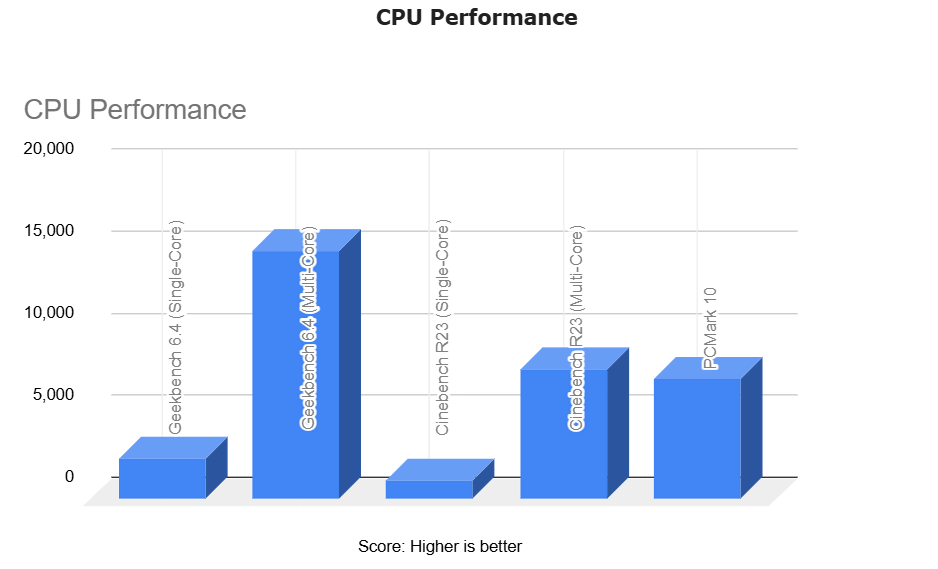
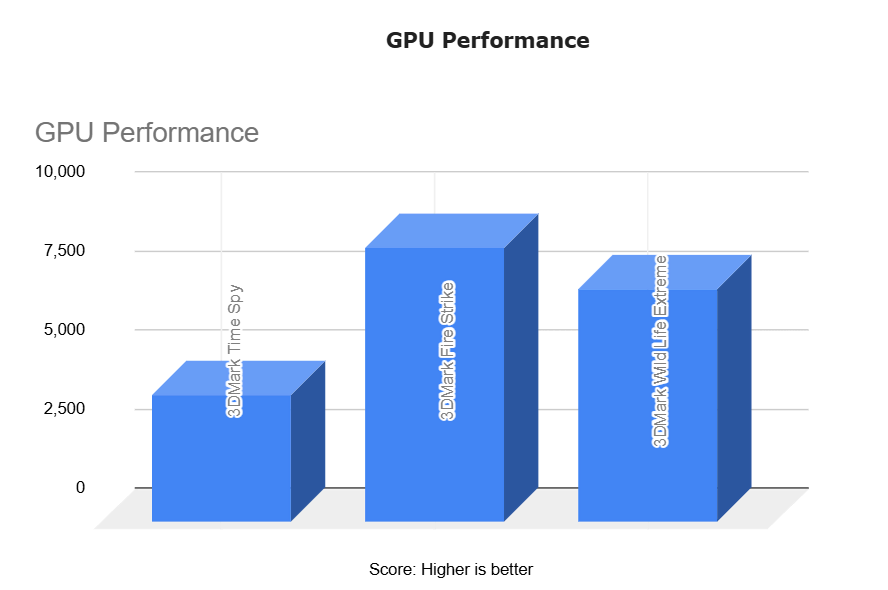
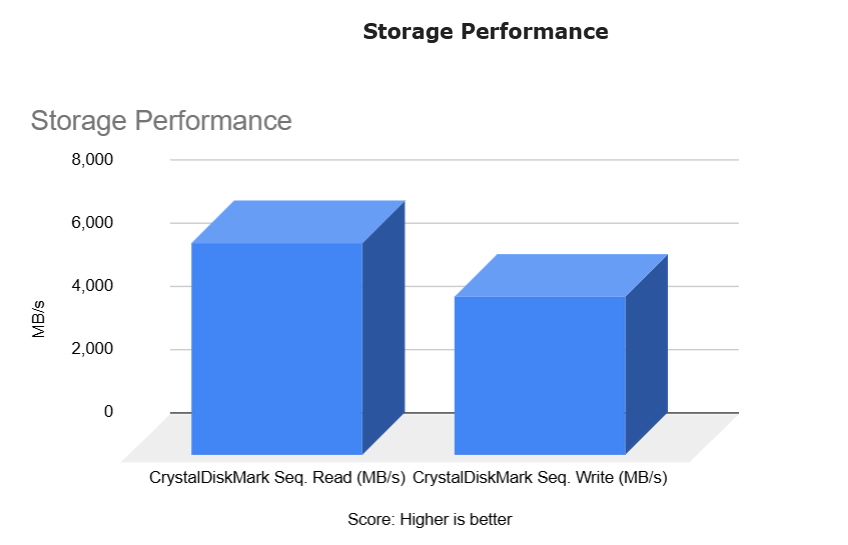
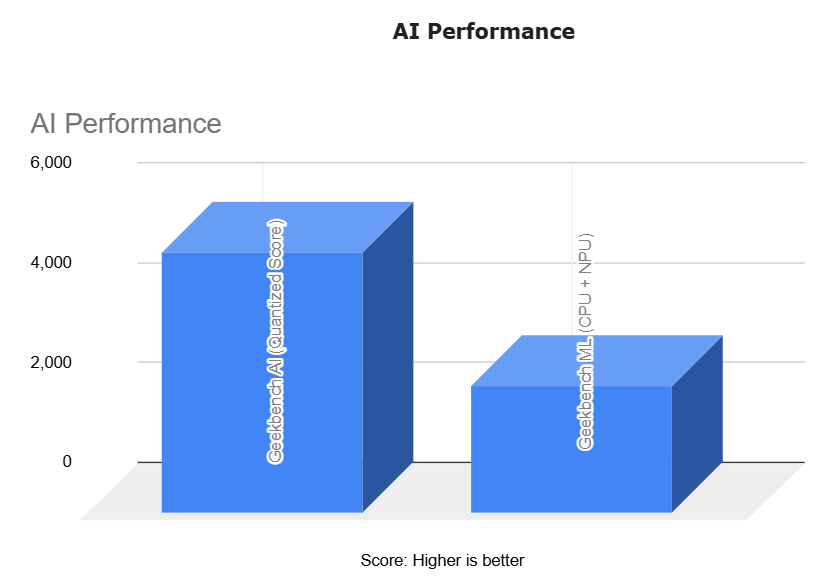
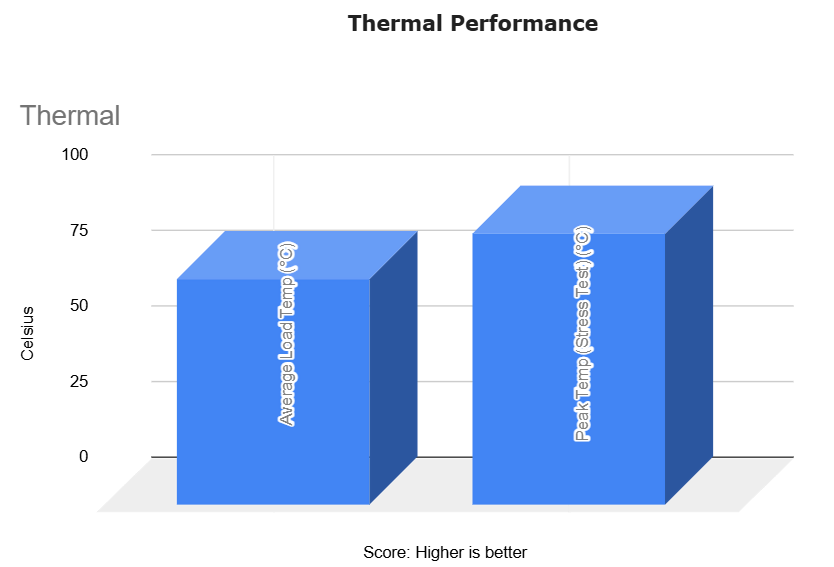
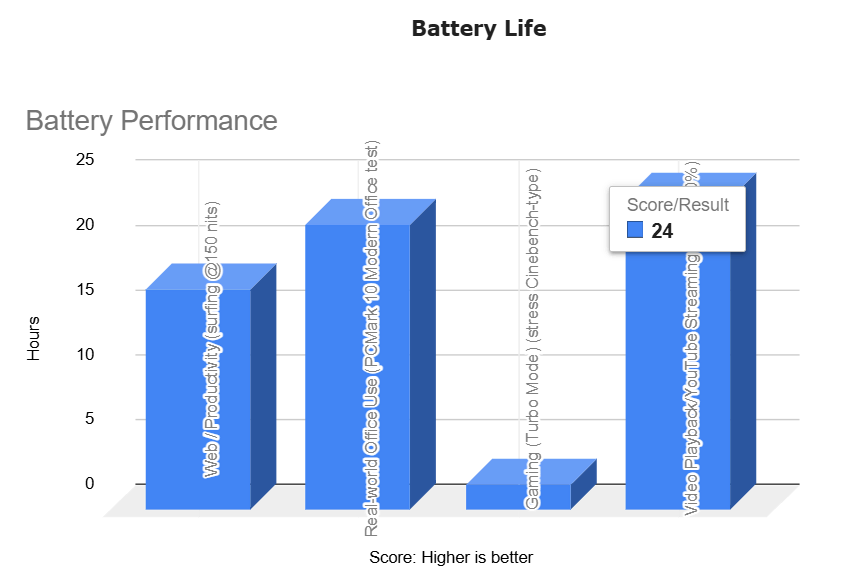
Read Acer Swift 14 AI: Full Specifications and Benchmarks
4. HP Omnibook 5
Cheapest AI Laptop

Key Specifications
| CPU (Processor) | AMD Ryzen AI 7 350 |
| GPU | Integrated AMD Radeon 880M |
| RAM | 16GB LPDDR5 |
| Storage | 1TB PCIe Gen 4 SSD |
| Screen | 16″ WUXGA (1920×1200), Touchscreen, 300 nits |
| Weight | 4.0 lbs (1.81 kg) |
| Battery | 52Wh, fast charging (50% in 30 mins) |
The HP Omnibook 5 blends AI power and productivity tools in a versatile 16-inch touchscreen design. It is an all-rounder $500, and built for students who work simultaneously on writing, presentations, and numeric work.
Performance
The AMD Ryzen AI 7 350 is optimized for modern workloads and includes a dedicated XDNA NPU with 50 TOPS capability. It easily handles AI use cases like transcription, live noise filtering, and AI art – all locally, without dependency on the internet.
The integrated Radeon 880M GPU and 16GB of RAM ensure quick rendering for school projects or light editing. With a 1TB SSD, there is ample storage for large files like assignments, videos, and even RAW photos or software tools.
Display and Design
The 16-inch WUXGA touchscreen gives you a large canvas for studying, designing, or browsing. Although this laptop is a bit bulky, the extra screen space and numeric keypad make it a great choice for those who prefer a desktop-like experience in a portable format.
Other Features
It includes a backlit keyboard, FHD IR webcam with privacy shutter, and AI noise-cancelling mic – useful for video calls and online classes. It charges fast (up to 50% in 30 minutes) and supports Windows 11 Copilot+.
Why it’s special
It’s the only AI laptop with a touchscreen and full numeric keypad, blending interactivity and productivity. It’s a great choice for students who need more than just portability.
Ideal For
It’s ideal for students who love a big screen, want AI power, and want strong performance for multitasking, editing, and long study sessions.
Pros
✔ Ryzen AI 7 with 50 TOPS NPU
✔ Spacious 16″ touchscreen with numeric keypad
✔ Fast 1TB SSD and 16GB RAM
✔ AI noise canceling and privacy-focused features
✔ Great for productivity and remote learning
Cons
✘ Slightly heavier than compact 14″ models
✘ Average battery life (~7–8 hours)
✘ No discrete GPU for pro-level creative tasks
5. ASUS TUF Gaming A14
Best Budget Gaming Laptop for AI

Key Specifications
| CPU (Processor) | AMD Ryzen 7 8845HS |
| GPU | NVIDIA GeForce RTX 4050 |
| RAM | 16GB LPDDR5X |
| Storage | 512GB PCIe Gen 4 SSD |
| Screen | 14″ WQXGA (2560×1600), 165Hz |
| Weight | Approx. 3.9 lbs (1.8 kg) |
| Battery | ~8+ hours (typical use) |
The ASUS TUF A14 is the only AI-enabled laptop on this list with dedicated graphics. It is designed for students who play games, render, or want to handle powerful creative tasks along with AI workloads.
Performance
The AMD Ryzen 7 8845HS is a fast and reliable chip capable of handling heavy workloads including gaming, video editing, and 3D modeling. With the RTX 4050 discrete GPU, this laptop can easily handle modern AAA games, rendering tasks, and software like Blender, Unreal Engine, or Premiere Pro.
What makes this model stand out is its MUX switch and AI support – giving you low latency while gaming and Copilot+ readiness for productivity tasks. You get an excellent balance between AI performance and graphics horsepower.
Display and Design
It features a 14-inch WQXGA 165Hz display with G-SYNC and 100% sRGB – perfect for fast-paced gaming or precise colour editing. Despite its gaming DNA, the A14 is relatively compact and features a sturdy, military-grade chassis and clean design.
Other Features
It includes a full-size RGB backlit keyboard, advanced cooling system, MUX switch, and all major ports for accessories. AI support comes via Copilot, noise cancellation, and camera tools built into Windows 11.
Why it’s special
This is the only laptop on the list that has a dedicated GPU and MUX switch, making it the best choice for design, game development, or engineering students who want strong AI support as well.
Ideal For
It’s perfect for students who want to play games, create or run demanding software, as well as use modern AI features for studies, content or productivity.
Pros
✔ Powerful combo: CPU+GPU
✔ 165Hz WQXGA screen with G-SYNC and 100% sRGB
✔ Great for gaming, editing, and AI productivity
✔ Rugged build with RGB keyboard
✔ AI-enhanced webcam and mic support
Cons
✘ Heavier than ultra-portables
✘ Shorter battery life under load
Full Comparisons: Affordable/Budget AI Laptops
| Image | Laptop Model | CPU | GPU | RAM | Storage | Display | Battery | Ports | Cooling | Special Features |
|---|---|---|---|---|---|---|---|---|---|---|
 | Microsoft Surface Laptop 13 | Snapdragon X Plus | Adreno Integrated | 16GB LPDDR5X | 256GB SSD | 13.8″ HDR Touch | Up to 20 hrs | USB-C, Surface Connect | Fanless | Copilot+, Recall, 1440p Cam |
 | ASUS Vivobook 16 (AI 7 350) | Ryzen AI 7 350 | Radeon 880M | 16GB LPDDR5 | 1TB SSD | 16″ WUXGA Anti-Glare | Up to 8 hrs | HDMI, USB-A/C, Audio | Dual Fan | Backlit KB, AI Mic, Webcam |
 | Acer Swift 14 AI (X Plus) | Snapdragon X Plus | Adreno Integrated | 16GB LPDDR5X | 1TB SSD | 14.5″ WQXGA 120Hz | Up to 24 hrs | USB-C, TB4, HDMI | Fanless | Wi-Fi 7, Copilot+, 1440p Cam |
 | HP Omnibook 5 (AI 7 350) | Ryzen AI 7 350 | Radeon 880M | 16GB LPDDR5 | 1TB SSD | 16″ WUXGA Touchscreen | ~7–8 hrs | USB-C, HDMI, USB-A | Vents + Dual Heat Pipe | Touchscreen, NumPad, Copilot+ |
 | ASUS TUF Gaming A14 | Ryzen 7 8845HS | RTX 4050 6GB | 16GB LPDDR5X | 512GB SSD | 14″ WQXGA 165Hz | ~7–8 hrs | HDMI, USB-C, RJ-45 | Dual Fan, MUX Switch | RGB KB, G-SYNC, Copilot+ |
If you want a more advanced laptop, Check this: Best Laptops for Deep Learning, ML, and AI Development
Why These Models Rank Highest
With so many laptops claiming to support AI, it can be hard to tell which ones are actually built for it, and which just use AI as a buzzword. The models we’ve included in this guide stand out for several important reasons that matter specifically for students.
1. Real AI Performance, Not Just Marketing1
Each of these laptops is powered by a dedicated NPU (neural processing unit) processor. This allows them to run advanced Copilot+ features directly on the device, like Recall, Cocreator, AI voice typing, or real-time captions, without relying on the internet or cloud processing. Whether it’s the Snapdragon X Plus, AMD Ryzen AI 7, or the Ryzen 8845HS, these processors are designed with high TOPS (trillions of operations per second) to handle AI workloads smoothly and efficiently.
2. Designed with Students in Mind
We didn’t just pick the fastest or most attractive laptops. These models were chosen because they strike a balance between performance, portability, and battery life, things that really matter to students. Whether you’re working on assignments all day, switching between Zoom and Google Docs, or doing some light photo editing, these devices are designed to handle everything without tiring you out too much.
3. The Right Value at the Right Price
Affordability is a big part of this list. All laptops offer a strong price-performance ratio, meaning you’re getting reliable hardware, real AI capabilities, and future-ready features at a fair price. Some models prioritize big screens or long battery life, while others offer gaming-level graphics – so there’s something for every kind of student, without breaking the bank.
How Students Can Actually Use AI Laptops
If you are wondering how an AI laptop can make a difference in your everyday student life, the short answer is: a lot. These devices are not only faster, but also smarter. They help you save time, stay organized, and get more done with less effort.
Here are some practical ways students can benefit from AI-powered laptops:
Coding and Development
AI laptops are great for computer science or engineering students. With tools like GitHub Copilot and VS Code IntelliSense, you can get real-time code suggestions, debug faster, and build projects more efficiently. Some models even run local AI models for coding assistance – no internet required.
Smarter Note-Taking and Transcription
Imagine being able to record a lecture and instantly get an AI-generated summary or searchable transcript, all on your laptop, without having to upload the file anywhere. That’s what features like Recall and AI voice transcription are built for. It’s perfect for continuing conversations with fast-paced professors or reviewing complex topics later.
Image and Video Editing with AI Tools
Creative students working with photos or videos will appreciate the built-in AI tools that make editing faster. Features like automatic background removal, smart filters, and AI cutouts are now available in apps like Adobe Express, Canva, or Clipchamp, and run even more smoothly with a good NPU.
Online Classes, Multitasking, and More
AI can make online learning even more seamless. Features like AI-powered noise cancellation, automatic background blur during video calls, and live captions help create a distraction-free virtual classroom. And with plenty of RAM and a fast SSD, you can run your browser, video calls, notes, and media apps, all simultaneously, without any interruptions.
Future-Proofing with AI: Why It Matters for Students
Buying a laptop today isn’t just about what it can do right now, it’s about how long it’ll stay relevant. And with the rapid pace of AI development, it’s more important than ever to choose a device that won’t feel outdated in a year or two.
How AI Laptops Are Evolving for Students
We’re already seeing the first wave of Copilot+ PCs, laptops that can run advanced AI tools directly on the device, without an internet connection. Over the next few years, these tools will get even smarter. Features like Recall (for searching your entire timeline), Cocreator (for real-time image generation), and AI writing assistants will become part of how students study, take notes, and manage their time.
Choosing a laptop with an NPU (neural processing unit) today ensures that when these features become standard, you’ll be ready to use them, rather than being stuck with a device that can’t keep up.
Why Scalable Hardware Matters
AI tools are more hardware-dependent than ever. If your laptop has an older CPU with no NPU or limited RAM, you might be missing out on some great new features.
So it makes sense to get a laptop with at least 16GB of RAM, a PCIe Gen 4 SSD, and a modern processor like Ryzen AI, Snapdragon X Plus/Elite, or Intel Core Ultra. These specifications are not only good for today’s tasks, but they are also designed to handle the next generation of AI tools.
Software Compatibility Going Forward
As Windows, macOS, and even ChromeOS integrate AI more deeply into their systems, having an AI-optimized processor is becoming even more important.
New apps will start to rely on your laptop’s NPU for better performance, and some apps can only run efficiently on an AI-enabled device. So if you plan to keep your laptop for 3-5 years, investing in a laptop with proper AI support now is a future-proof move.
Student Budget Tips: Getting the Best Deal on an AI Laptop
Buying a new AI laptop doesn’t have to empty your wallet. With the right timing and a few smart strategies, you can get a high-performing, future-ready machine without overspending.
Here we have added some simple, effective tips to help you save money and still get the features you need.
1. Shop Smart Around Prime Day, Back-to-School, and Holiday Sales
Retailers often offer big discounts during Amazon Prime Day, back-to-school season, Black Friday, and New Year’s clearance events. If you’re not in a rush, try shopping around these times — you can often save $100 to $300 on the same model.
2. Use Student Discounts from Major Brands
Many laptop brands offer special discounts for students. For example:
Dell has its Dell Advantage for Students program.
HP offers discounts through its Education Store.
Apple offers lower prices and free gifts (such as AirPods) with MacBooks through its Apple Education Store.
Before checking out, always look for the student discount section or sign up using your college email to get the savings.
3. Know Your Trade-Offs: Integrated vs. Discrete Graphics
If your work doesn’t involve heavy design, video editing, or gaming, you can save money by choosing a laptop with integrated graphics (such as an AMD Radeon or Adreno GPU). These are great options for AI tools, note taking, browsing, and productivity.
But if you’re interested in creative software, game development, or architecture, it may be worth spending more money for a model with a dedicated GPU (such as an RTX 4050). Just make sure you’re actually using that extra power – otherwise, it’s better to invest in longer battery life or more storage.
Final Buying Checklist
Here’s a quick list to help you make the right decision before you hit “Buy”:
- ✅ Does it have a processor with an NPU (Neural Processing Unit)?
- ✅ At least 16GB RAM and 512GB SSD?
- ✅ Battery life over 8–10 hours?
- ✅ Copilot+ PC or AI-compatible processor (Snapdragon X, Ryzen AI, Core Ultra)?
- ✅ Display and keyboard comfort for your usage (size, backlit, touch)?
- ✅ Matches your academic needs — coding, editing, portability, or performance?
- ✅ Within your budget, with possible student discounts applied?
Make your choice based on your needs — not just specs — and you’ll be set for the next few years of AI-enhanced learning.
Conclusion: Which AI Laptop Should You Choose?
AI laptops are essential for students to learn, work, and stay organized. Whether you’re coding, taking classes, or creating content, the right AI device can help you stay productive and ahead of the curve.
Here’s a quick rundown of our top picks:
- Best Overall: ASUS Vivobook 16 – Great AI performance, big screen, great value
- Best Portability: Acer Swift 14 AI or Microsoft Surface Laptop – Thin, portable, long-lasting battery
- Best for Creatives/Gamers: ASUS TUF Gaming A14 – Powerful GPU and fast display
- Best Touchscreen: HP Omnibook 5 – Ideal for demonstrations and interactive apps
Whichever laptop you choose, these laptops support AI tools, multitasking, and future updates to get you ready for your next learning journey, your education, creativity, and goals.
Frequently Asked Questions (FAQ)
1. What is an AI laptop and how is it different from a regular laptop?
An AI laptop has a special chip called an NPU (neural processing unit) that allows it to run artificial intelligence tasks directly on the device. Unlike normal laptops that rely on the cloud for tasks like voice transcription or image generation, AI laptops can complete these tasks faster with better privacy and less battery usage.
2. Do I really need an AI laptop as a student?
It depends on how you use your laptop. If you mostly browse the web and write documents, a traditional laptop will work just fine. But if you want features like AI-powered note-taking, real-time captions, or copilot integration, an AI laptop is a great way to make your device future-ready.
3. What is a Copilot+ PC?
Copilot+ PCs are Microsoft’s label for a new generation of AI-ready Windows laptops. These laptops have high-performance NPUs, long battery life, and support for features like Recall, Cocreator, and advanced multitasking – all designed to run locally without an internet connection.
4. Which processor is best for AI laptops: Intel, AMD, or Snapdragon?
All three have their strengths:
Snapdragon X Plus/Elite: Best battery life, fanless, great for portability
AMD Ryzen AI: Strong multitasking with powerful NPUs (up to 50 TOPS)
Intel Core Ultra: Balanced performance with wide app compatibility
If you’re focused on AI features and efficiency, Snapdragon and Ryzen AI chips currently offer the best native support.
5. Can AI laptops run regular apps and games?
Yes! AI laptops can run all the standard apps like Microsoft Office, Chrome, Zoom, and Adobe Creative Suite. Some models (like the ASUS TUF Gaming A14) even include dedicated GPUs, making them capable of handling games, 3D rendering, and heavy creative tasks.
6. Are AI laptops worth it for future updates?
Absolutely. AI features are being incorporated more deeply into Windows and macOS, and many of the upcoming tools will require an NPU to work efficiently. If you plan to keep your laptop for 3-5 years, choosing a laptop with AI hardware now will help you stay updated and avoid missing out on next-generation features.
